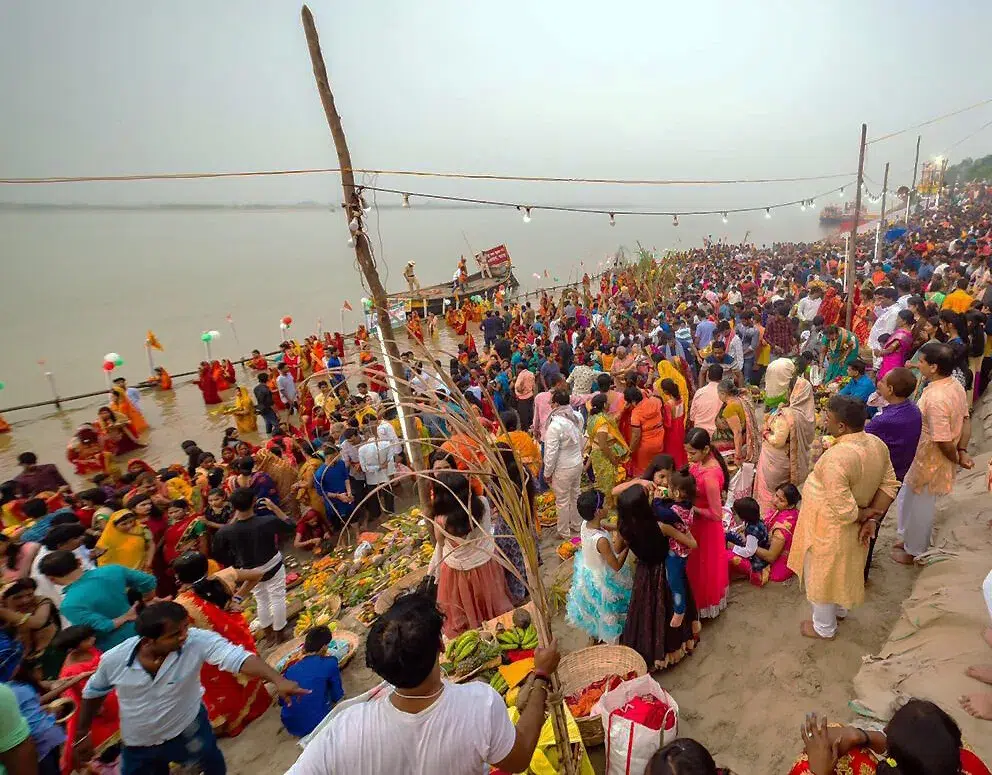
Image Source: Bihar Tourism
Getting Ready for Chhath Puja
As the sun comes up, people start their day with a special bath in rivers or lakes to feel pure and spiritually refreshed. Families gather by the water, like riverbanks and ponds, to pray to the rising sun with excitement and devotion.
Chhath Puja Traditions
Chhath Puja lasts for four days and includes fasting, rituals, and strong devotion. On the first day, called Nahay Khay, people clean their surroundings and take a holy dip. The second day, Kharna, is about fasting and breaking the fast at night after prayers.
Main Rituals of Chhath Puja
The third day is the most important. Mostly women stand in waist-deep water and offer ‘Arghya’ (offerings) to the setting sun, expressing thanks for the energy and life it gives. The last day, Paran, involves praying to the rising sun and breaking the fast.
Bringing Communities Together
Chhath Puja is not only a religious event; it’s a celebration that unites communities. There’s music, the sweet smell of traditional treats, and families sharing the joy of the festival.
Embracing Diversity
Even though Chhath Puja has deep roots in North India, people from different states and communities now join in, showing the diverse and unique culture of India.
Thanking the Sun God
Chhath Puja allows devotees to express gratitude to the Sun God for supporting life on Earth. The rituals are done with dedication, creating a spiritual and harmonious atmosphere. As the sun goes down, concluding the first day of Chhath Puja, the excitement for the following days is clear. Families and communities will continue to come together, and Chhath Puja’s spirit will spread across the nation, symbolizing unity, faith, and respect for nature.

